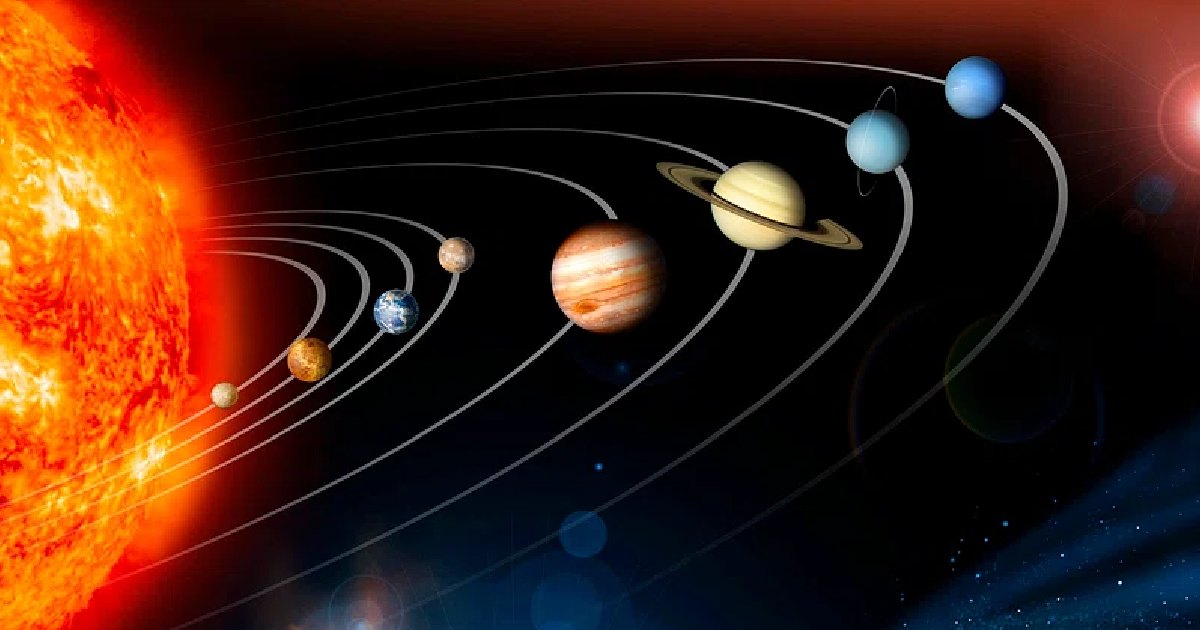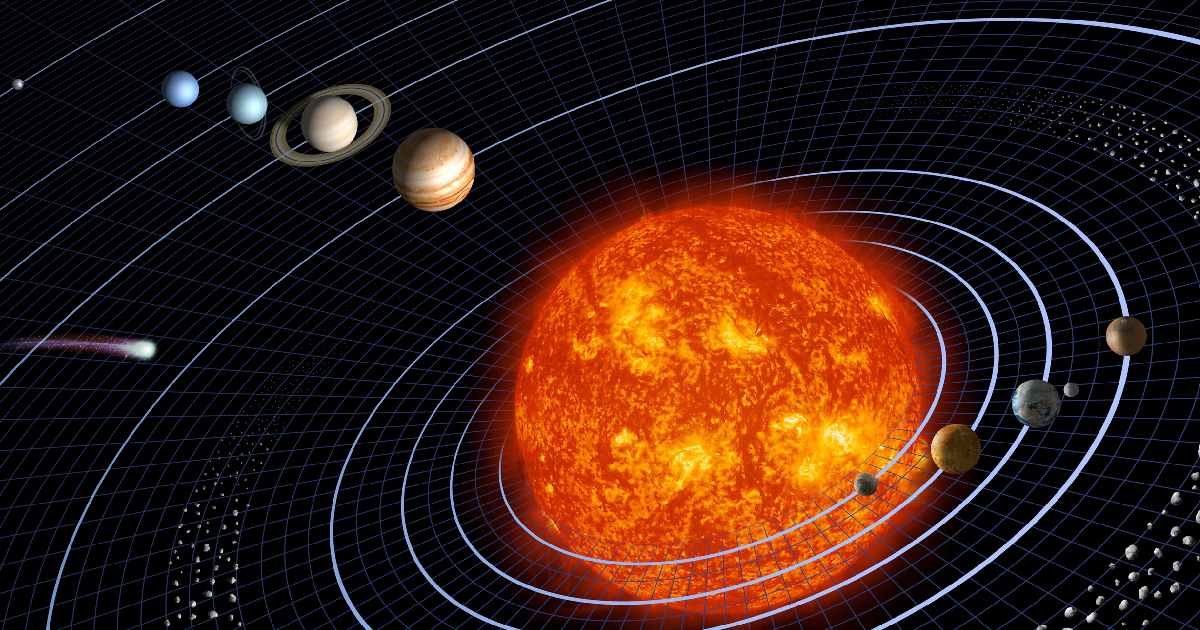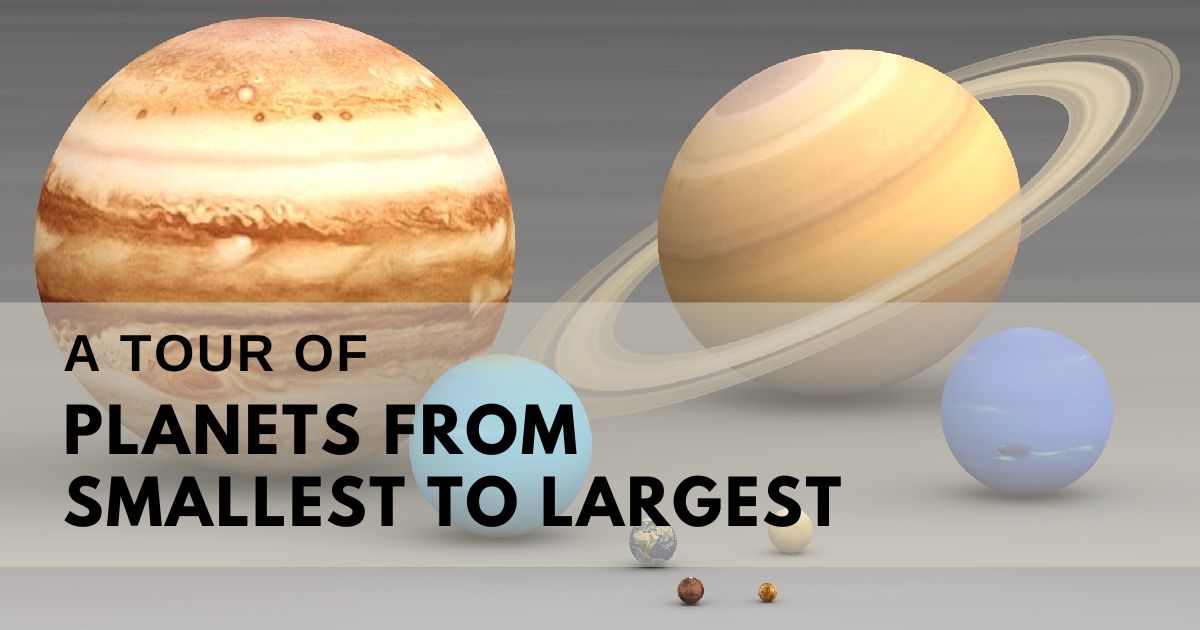
Whatever your age, have you ever gazed up at the night sky and marveled at its mysteries, feeling the beautiful serenity and making your wish? Are you curious about our neighbors or life away from the Earth in the vast expanse of space? Each twinkling star is a distant sun, and circling many of them are planets like those in our solar system.
From Mercury’s diminutive nooks to Jupiter’s expansive reaches, our solar system displays a stunning diversity. Well, pack your imagination because we’re about to scale the planets of our solar system. Today, let’s stroll through our cosmic neighborhood, from the tiny rocks close to the Sun to the colossal giants lurking in the shadows of the outer solar system.
Overview of Planetary Measurement
Measuring a planet’s size isn’t as straightforward as pulling out a ruler; astronomers have refined a complex process over centuries. Typically, we measure a planet’s diameter to get a basic idea of its size. This diameter is a line that stretches directly across the planet’s center from one point on its surface to the opposite side.
Beyond just size, astronomers consider a planet’s mass and volume, which reveal much about its composition and density. For instance, a larger diameter doesn’t always mean a planet is more massive—its density can tell a different story, like the gas giants Jupiter and Saturn, which are large but much less dense than Earth.
But how exactly do scientists gather this data? The process involves a variety of techniques. Observations from telescopes equipped with advanced optics and other tools allow scientists to see these distant worlds in detail.
Space missions also play a crucial role; we can gather direct measurements and high-resolution images by sending spacecraft to orbit or flying by planets. These missions provide valuable data that, when combined with observations from Earth, help paint a comprehensive picture of each planet’s physical characteristics. This blending of ground-based observations and space exploration is crucial for understanding the size and the myriad features that make each planet unique.
Mercury: A Small Wonder

- Named for The Roman messenger god, Mercury.
- Diameter: About 4,880 kilometers.
- Orbit: It takes approximately 88 Earth days to complete one orbit around the Sun.
- Day: About 59 Earth days to complete one rotation on its axis.
- Number of moons: 0
Our first stop is Mercury, the smallest planet, a mere dot when viewed from Earth. With an equatorial diameter of 3,032 miles (4,880 kilometers), this tiny sphere zips around the Sun, completing a lap every 88 days. Think of Mercury as that little sibling who outruns all the bigger kids on the playground.
Despite its size, Mercury has a dense, metallic core and a surprising magnetic field, remnants of a dynamic history. It’s a testament to how even the smallest bodies can hold profound secrets, standing as rugged survivors of intense solar radiation and space weathering.
Mars: The Red Marvel

- Named for The Roman god of war, Mars.
- Diameter: About 6,779 kilometers.
- Orbit: Approximately 687 Earth days to complete one orbit around the Sun.
- Day: It takes about 24.6 hours to complete one rotation on its axis.
- Number of moons: 2 (Phobos and Deimos).
Next is Mars, the fourth planet in our solar lineup or, let’s say, one of the other inner planets and a favorite among aspiring space travelers. Though only 6,790 kilometers wide, Mars packs a punch with its dramatic red deserts and towering volcanoes. It’s where you might like to find frozen water beneath the soil or gaze at the largest volcano in the solar system, Olympus Mons.
Today, it’s thin atmosphere and dusty surface continue to be the focus of scientific studies and missions as we dream of one day setting foot on its rust-colored ground.
Venus: Earth’s Mysterious Twin

- Named for The Roman goddess of love and beauty, Venus.
- Diameter: About 12,104 kilometers.
- Orbit: It takes approximately 225 Earth days to complete one orbit around the Sun.
- Day: It takes about 243 Earth days to complete one rotation on its axis; it rotates opposite most planets.
- Number of moons: 0.
Swinging by Venus, our journey takes a steamy turn. Venus, often dubbed Earth’s twin due to its similar size (12,104 kilometers in diameter), holds a vicious secret beneath its thick clouds of sulfuric acid, like it’s so deadly going here. The greenhouse effect runs wild here, making it hotter than a pizza oven. If Earth is the garden, Venus is the greenhouse—too hot!
Despite these inhospitable conditions, Venus intrigues scientists with its geological mysteries and the recent hints of phosphine gas in its clouds, which could suggest bizarre high-altitude microbial life or unknown geochemical processes.
Earth: The Oasis Life

- Named for: The English/German word ‘earth’ means the ground.
- Diameter: About 12,742 kilometers.
- Orbit: 365.25 days to complete one orbit around the Sun.
- Day: 24 hours to complete one rotation on its axis.
- Number of moons: 1 (The Moon).
Then, home sweet home, Earth—the third planet from the Sun. Yes, our vibrant world, 12,742 kilometers in diameter, buzzes with life from the smallest insects you can find and the tallest living things you can think of. It’s the only spot in this vast universe where you can breathe freely, swim in oceans, and enjoy a sunset (of course, as for the humans). From bustling cities to silent mountains, Earth is a testament to life’s resilience and beauty, the beautiful place we are living in now.
Who wouldn’t love our planet’s dynamic climate, teeming biodiversity, and unique water cycles, making it an endless subject of study and the perfect habitat for a myriad of organisms, including ourselves?
Neptune: The Windy Outpost

- Named for The Roman god of the sea, Neptune.
- Diameter: About 49,244 kilometers.
- Orbit: It takes about 164.8 Earth years to complete one orbit around the Sun.
- Day: It takes about 16 hours to complete one rotation on its axis.
- Number of moons: 14 (known moons).
As we venture into the outer solar system planets (yes, we’re halfway there), Neptune, the eighth planet, greets us with wild, blue yonder. About 49,244 kilometers in diameter, Neptune is less like a giant and more like a giant blueberry floating in space. The winds circle the planet due to the extremely low temperatures and high pressure, creating a mesmerizing dance of clouds in shades of blue and white, a stark contrast to the tranquil blue seen from afar.
Uranus: The Tilted Giant

- Named for: The ancient Greek deity of the sky, Uranus, the grandfather of Zeus.
- Diameter: About 50,724 kilometers.
- Orbit: It takes about 84 Earth years to complete one orbit around the Sun.
- Day: It takes about 17.2 hours to complete one rotation on its axis.
- Number of moons: 27 (known moons).
Not far off, Uranus takes a bow. The seventh planet from the Sun, about 50,724 kilometers across, spins on its side. It’s the only planet that rolls along its orbit, making it the universe’s oddball. Imagine trying to walk in a straight line while tilted—this is Uranus’s daily struggle!
This peculiar orientation leads to extreme seasonal changes, with parts of the planet experiencing continuous daylight or darkness for over two decades, which profoundly affects its atmospheric dynamics and climate.
Saturn: The Ringed Beauty

- Named for The Roman god of agriculture, Saturn.
- Diameter: About 116,460 kilometers.
- Orbit: It takes about 29.5 Earth years to complete one orbit around the Sun.
- Day: It takes about 10.7 hours to complete one rotation on its axis.
- Number of moons: 83 (known moons).
Next, Saturn shows off its glorious rings. The sixth planet from the Sun, with a diameter of 116,460 kilometers, Saturn is the jewel of our solar system. Its rings, composed of countless ice and rock fragments, shimmer like a crown. If there were a beauty contest for planets, Saturn would win.
Beyond their aesthetic allure, Saturn’s rings offer clues to the planet’s formation and evolution. They serve as a record of the solar system’s history that continues to puzzle and fascinate scientists.
Jupiter: The Supreme Giant

- Named for The Roman king of the gods, Jupiter.
- Diameter: About 139,820 kilometers.
- Orbit: Approximately 11.86 Earth years to complete one orbit around the Sun.
- Day: It takes about 9.9 hours to complete one rotation on its axis.
- Number of moons: 79 (known moons).
Our final destination is Jupiter, the largest planet. This colossal world measures about 139,820 kilometers in diameter. It’s a vast kingdom of swirling gases, storms larger than Earth, and a magnetic field that dwarfs all others. Jupiter, the fifth planet from the Sun, is like the king of an enormous celestial empire, ruling over dozens of moon vassals.
Its immense gravity influences countless aspects of the solar system, from the orbits of other planets to the creation of awe-inspiring meteor showers that grace our Earthly skies. The exploration of Jupiter and its moons continues to unlock secrets of the early solar system, providing insights into the processes that may have led to the formation of Earth and other planets.
The International Astronomical Union and Our Growing Knowledge
Guided by the International Astronomical Union (IAU), our understanding of these planets—from the dwarf planet Pluto to the largest planet, Jupiter—continues to evolve. The IAU planet definition helps us categorize and comprehend the diverse bodies within our solar system and beyond, enriching our cosmic perspective.
Reflections on a Cosmic Scale

From Mercury, the smallest planet, to Jupiter, the largest, our solar system or universe as a whole is a place of wonders and extremes (some might say creepy). Each world, from the terrestrial planets to the gas giants, from the dwarf planet Pluto to the distant realms of the outer solar system, tells a unique story that will make us wonder how amazing the universe is.
These celestial bodies remind us of our tiny place in the cosmos (our little spot in the universe) and inspire dreams of future explorations to answer all the mysteries and questions we’ve been craving answers to, whether it is something for scientific research or just out of curiosity.
After this exploration of the solar system, the question is, what fascinates you most about our planetary neighbors? Is it the mindblowing beauty of the dwarf planets, the mystery of the gas giants, or the familiar comfort of our terrestrial planet? I encourage you to keep looking up and questioning what lies beyond our blue sky; keep your curiosity burning. Maybe set up a telescope or visit a planetarium to witness these wonders firsthand.
This journey through the planets, from the smallest planet to the largest planet, not only enriches our knowledge but also our appreciation for the vast expanse we are part of. Remember, every planet has its story, and every look into the sky is a chance to learn more and be reminded always to be grateful to be part of this wonderful place.
Frequently Asked Questions (FAQs)
What is the order of planets from smallest to largest?
If you’re looking at the planets in our solar system from smallest to largest, here’s the list:
- Mercury – It’s the smallest and closest to the Sun.
- Mars – Known for its red color and dusty landscape.
- Venus – Similar in size to Earth but with a toxic atmosphere.
- Earth – Our home planet, teeming with life.
- Neptune – The farthest of the gas giants.
- Uranus – Known for its unique tilt.
- Saturn – Famous for its beautiful rings.
- Jupiter – The largest planet, a massive gas giant.
Remembering this order can be a fun exercise in visualizing each planet and its unique characteristics.
How to remember the planets from largest to smallest?
An easy mnemonic to remember the planets from largest to smallest is:
Just Say U Need More Valuable Earth Minerals, Mercury.
Here’s what it stands for:
- Jupiter (largest)
- Saturn
- Uranus
- Neptune
- Mars
- Venus
- Earth
- Mercury (smallest)
Mnemonics make it simple to recall facts, and this one’s pretty catchy!
What are the 5 smallest planets?
The five smallest planets in our solar system, in order from smallest to largest, are:
- Mercury
- Mars
- Venus
- Earth
- Neptune
These planets vary significantly in their characteristics, from the scorching surface of Mercury to the icy winds of Neptune.
Which planet is the biggest and smallest?
In our solar system, the title of the biggest planet goes to Jupiter. It’s so massive that all the other planets could fit inside it with room to spare. On the other end of the spectrum, Mercury is the smallest planet, about a third the size of Earth, making it quite a contrast to Jupiter.
Which is the hottest planet?
Despite being closer to the Sun, Mercury isn’t the hottest planet. That honor goes to Venus. Venus has a thick, toxic atmosphere filled with carbon dioxide and clouds of sulfuric acid, creating a runaway greenhouse effect that heats its surface to a blistering average of around 467 degrees Celsius (872 degrees Fahrenheit). This makes it hotter than Mercury, even though it’s farther from the Sun.

